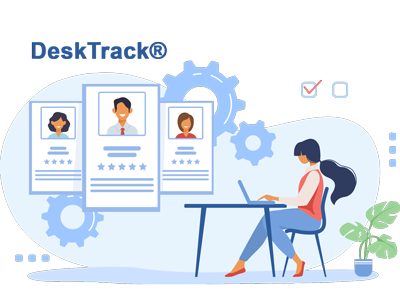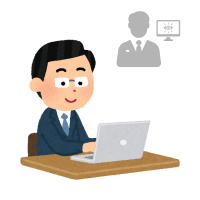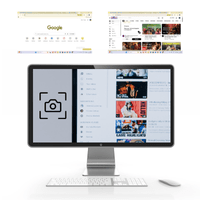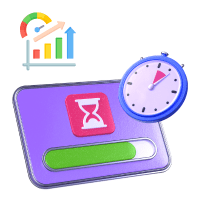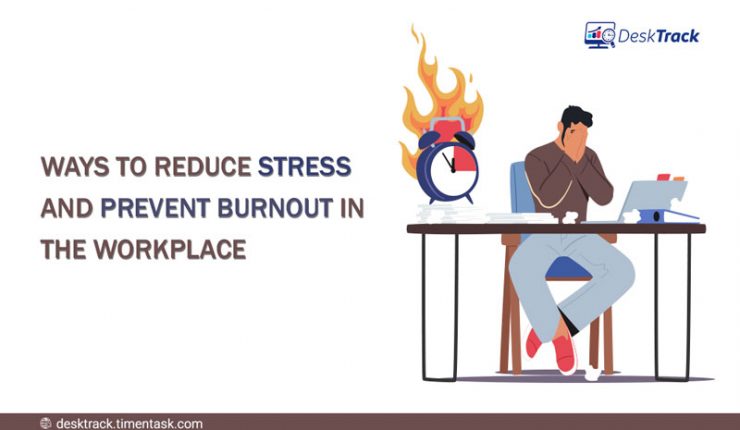
Stress at work has the potential to overwhelm everyone. Anyone may become stressed out by the constant barrage of emails, Slack messages, ringing phones, and unexpected meetings with coworkers.
It’s normal to have some strain, particularly if you have an impending deadline or a difficult project. However, continuous work stress can have an adverse effect on your physical and mental health. Even if you enjoy your job, you will inevitably experience work stress. However, there are things you can do to minimize your stress and Burnout in the Workplace.
Let your life be more than just managing Stress in the Workplace!
Defining Stress and Burnout
Stress is a normal reaction to the demands and stresses of our everyday lives. It frequently results from excessive workloads, pressing deadlines, interpersonal issues, or a lack of control over one’s activities at work.
Whereas, When a person is under too much stress for too long, burnout results. The employee now feels weary physically, psychologically, and emotionally. They also exhibit less care for others, burnout affects employee productivity, and are more likely to miss work.
The Impact of Stress and Burnout on Individuals and Organizations
Stress and burnout have far-reaching consequences, affecting both individuals and organizations in profound ways.
Many of us experience negative effects on their bodily and mental health as a result. Sleep disruptions, anxiety, sadness, and even physical health concerns including cardiovascular disorders can result from high levels of stress and burnout. It is also important to consider the impact on one’s relationships, general happiness, and personal life.
The effects of both stress and burnout are equally detrimental to a business. Employee productivity declines and job quality worsens when they are overworked and weary. Increased absenteeism, greater rates of staff turnover, and a general decline in employee morale might come from this. The financial ramifications for businesses are significant; studies suggest that stress-related problems cost the economy billions of dollars every year.
Furthermore, stress and burnout can contribute to a toxic work culture. The rising “dark side” of employee engagement is illustrated by the possibility that engaged workers will be more prone to burnout. This “Dark Side” becomes apparent when burnout is only seen through the perspective of what occurs at work and when employee engagement is regarded and pursued in a vacuum, failing to sustain well-being.
If these resources are not supplied, however, employees start to give more and more of themselves without any replenishment. Devoted and engaged employees actively confront and face the ever-present realities of work and life demands.
Signs and Symptoms of Workplace Stress and Burnout in the Workplace
By understanding the behavioral patterns, physical symptoms, and emotional signs of professional stress and burnout, we may better equip ourselves to recognize and handle these issues before they become more serious.
Physical and Emotional Signs
1. Physical Signs:
- Persistent headaches or migraines
- Digestive issues, such as stomachaches or irritable bowel syndrome
- Muscle tension, body aches, or joint pain
- Fatigue and chronic tiredness, despite adequate rest
- Changes in appetite or weight loss/gain
2. Emotional Signs:
- Anxiety, excessive worry, or racing thoughts
- Irritability, short temper, or frequent mood swings
- Feelings of sadness, hopelessness, or depression
- Difficulty concentrating or making decisions
- Increased sensitivity to criticism or a heightened need for validation
Behavioral Indicators
1. Work Related Behaviors:
- Decreased effectiveness and productivity
- Putting off doing something or failing to fulfill deadlines
- Increased tardiness or absence
- Diminished participation or withdrawal from work-related activities
- Having trouble assigning assignments or asking for assistance
2. Personal Life Behaviors:
- Ignoring self-care practices like exercise or a nutritious diet
- Social exclusion or separation from family and friends
- Escapist actions like abusing alcohol or other drugs excessively
- Increased use of coffee or other stimulants as a coping mechanism
- Neglecting past interests or activities
Recognizing Early Warning Signs for Prevention of Burnout in the Workplace
For prompt intervention, it is essential to recognize the early warning symptoms of occupational stress and burnout. You may overcome these difficulties by being aware of both yourself and other people. Several important signs include:
i) Take note of any notable deviations from a person’s typical patterns of behavior or job performance.
ii) Observe any of the above-listed physical or emotional symptoms that last for a long period or seem out of the ordinary for a person.
iii) Communication hints number three are to actively and sympathetically listen to yourself, your coworkers, and your staff. In talks, pay attention to signals of annoyance, tiredness, or unhappiness.
The Importance of Work Life Balance
Everybody’s definition of work-life balance and work-life integration is varied due to the individual elements of each of our lives and the shifting demands of our commitments. You are always negotiating where and how you will spend your time.
Read More: How to Create a Healthy Workplace Environment
You get to choose your priorities, whether they are connected to your career or personal life, as you strive toward achieving improved work-life balance. Remember, aiming for harmony and making deliberate decisions to prioritize what really matters are more important than trying to balance life perfectly every day.
Defining a Healthy Work Life Balance
For every one of us, a healthy work-life balance will imply various things. Making sure you feel pleased and fulfilled in all aspects of your life—work, and play—is more important than just dividing your time in half. A favorable balance may be:
- Achieving your job obligations while finding time for your friends and interests.
- Having enough time to adequately eat and sleep.
- While working from home and not thinking about work.
Benefits of Achieving Work Life Balance
Overworking might be harming your health as well as making you a “very dull boy/girl” (we’re looking at you, Jack, don’t be the dull person).
In reality, it won’t take long for you to start feeling the effects of giving up too much of your time for work, whether it’s through increased stress, recurrent diseases brought on by a compromised immune system, or chronic weariness.
- Employees who are able to concentrate and be present at work will ultimately be more productive.
- They understand the value they add to the company and are able to manage being held accountable for their job.
- Employees are better able to control their stress levels when they feel as though they have a work-life balance.
Strategies to Reduce Stress at the Workplace
The phrase “work-life balance” might be deceptive since it doesn’t always mean giving each component of the equation equal weight. The fact is that life and work are intertwined, and the only thing that remains constant is a person’s mental health and outlook. Employers and workers so work together to receive and sow the benefits of a work-life balance.
At its core, work-life balance is both a way of thinking and a way of living. When an employee’s mental health is effectively looked after and they are able to manage (and compartmentalize) all elements of their lives, including work, it is attained.
i) Pay Attention to Your Priorities:
- Think about your priorities. Do they have a common objective? Are they essential to one of your life’s most significant aspects?
- Which of your responsibilities make you feel more energized and which ones make you feel more drained?
- What would occur if you broke a certain commitment: How is the cost-benefit analysis conducted?
ii) Identify Gratifications:
Adding additional things to your calendar might make your schedule more full, but it can also make you happier in life. Such actions include rewarding ourselves; they require time and effort but leave us feeling better and less stressed.
Gratifications are activities that make the most of our talents and inventiveness, provide us with joy, and pass the time quickly. You’ll be happy you did, as your stress levels are reduced and your sense of fulfillment is increased.
Read More: How to Balance Work Life
Mastering the Clock: Time Management Techniques
There can never be enough hours in the day to finish all of your tasks. To make the most of each day, it is essential to develop efficient time management ideas and procedures. Time management is the process of deliberately planning and restricting the amount of time spent on particular tasks in order to maximize productivity and reduce stress at the workplace. Setting deadlines, creating to-do lists, and rewarding yourself with little prizes are likely strategies you are already familiar with.
Read More: How to Manage Task at Work
Prioritizing Tasks and Establishing Achievable Objectives
- Sort tasks based on their importance and urgency. Start with the top priority and then break larger undertakings into smaller, more manageable phases.
- Make sure your goals are relevant, time-bound, specific, measurable, and attainable. This tactic enhances clarity and attention, which in turn increase motivation and productivity.
- Find the actions that will most likely lead to the outcomes you desire. By focusing on the 20% of activities that provide 80% of the results, less time should be spent on low-value jobs.
Using Time Management Tools and Techniques
- Time-Tracking Tools: Use DeskTrack or other time tracking software to have a better understanding of how you spend your time. Data analysis assists in locating production bottlenecks and making wise modifications.
- Pomodoro Technique: Divide your work into pomodoros of 25 minutes each, with 5-minute pauses in between. This method promotes sustained productivity by improving attention and preventing of burnout.
- Eisenhower Matrix: Use a four-quadrant matrix to group jobs according to their relevance and degree of urgency. This method aids in time management and effective prioritization.
Introducing DeskTrack Software as an Effective Time Tracking Tool
The DeskTrack software is a great resource for time management at work and helps to reduce stress at the workplace. Both employer and employee benefit from its ability to monitor productivity and prevent burnout. Key elements consist of:
- DeskTrack tracks time spent on several programs and websites automatically, giving precise insights into work activity.
- Distraction tracking allows users to efficiently deal with distractions by recording idle time and identifying time spent on websites or programs that are not connected to their task.
- DeskTrack helps in tracking time spent on projects, tasks, or clients, allowing for more time allocation and improved project management. resulting in productivity and reduce burnout
Finding Zen in the Daily Grind: Embracing Mindful Work Practices
Understanding Mindfulness and Its Benefits
It’s difficult to establish a meditation practice that lasts. In fact, it’s so challenging that when I first begin working with executives, the majority of them admit to having tried meditation, but very few say they regularly practice it. Not because they don’t perceive advantages, though.
It has been demonstrated that mindfulness improves both personal well-being and practical abilities like decision-making on the job.
Incorporating Mindfulness into Daily Work Routines
You may build a work environment that promotes your well-being and enables you to thrive by developing awareness, embracing mindful ways to stress and challenging situations, and finding moments of calm throughout the day.
1. Begin the Day Mindfully
Take some time for peaceful thought in the morning before plunging into the flurry of emails and deadlines. Close your eyes, relax, and concentrate on your breathing. Without passing judgment, permit any fears or ideas to flow through. Then, turn your focus back to the pattern of your breath. This little exercise can help you center yourself and create a good mood for the rest of the day.
2. Set up a Mindful Work Area
Remove any extraneous items from your desk and set up a calm, focused setting. Include things that motivate you, like plants, thought-provoking sayings, or soothing aromas. Think carefully about how to arrange your work gear, keeping only what you need nearby. Your ability to stay focused and engaged throughout activities may be substantially improved by having a tidy and organized workstation.
3. Accept Thoughtful Breaks
Take little rest throughout the day to check in with yourself. Get up from your desk, move about, and give your mind some space to relax. Make use of these periods to conduct brief meditations or deep breathing techniques. You may refuel your energy and return to your job with fresh focus and clarity by allowing yourself these thoughtful breaks.
Mindful Approaches to Handling Stress and Difficult Situations
1. Develop an Awareness of Your Reactions
Take a minute to notice your thoughts and feelings when you are in trying circumstances or stressful scenarios. Keep an eye out for any recurring patterns of resistance or reaction.
2. Communicate Mindfully
In hectic office settings, misunderstandings and miscommunications occur all too often. Make a planned effort to listen intently, talk with clarity and kindness, and refrain from making unwarranted judgments while interacting with coworkers or clients. This helps in employee burnout prevention and feels more like a team.
3. Look for Times of Silence
It’s important to locate periods of silence, even in the middle of a busy workday. Simple examples of this include taking a thoughtful stroll during your lunch break or pausing before a meeting to take a few deep breaths.
Harmonizing Work and Life: Embrace the Power of Work-Life Integration
Integrating Personal Passions and Interests into Work
Harmonizing work and passion is crucial for living a fulfilled life in the fast-paced world of today. Your career may reach new heights of work satisfaction and professional development if you can successfully incorporate your passions into it.
Personal contentment and drive may both increase significantly when your career and passion are together. When you are genuinely interested in your profession and are profoundly committed to it, your career ceases to be just a job and instead becomes an important part of who you are.
Finding Purpose and Meaning in Your Work
Integrating your job and personal life depends on finding purpose in your career. Remain detached and consider the bigger picture. Why are you acting the way that you are? Connect with your fundamental values and make sure they are in line with the goal of your job.
You’ll discover a new sense of purpose once you see how people and society as a whole are affected by your job. With a strong sense of purpose, you can stay motivated, face obstacles with fortitude, and see your job as an extension of who you really are.
Take advantage of the chance to create a life authentic to who you are, where job and personal fulfillment exist in perfect harmony. Keep in mind that the goal isn’t to strike a balance; the goal
Creating a Positive Work Environment
The cornerstone for productivity, engagement, and general well-being and reduce stress at workplace is a pleasant work environment. Employees flourish and the organization benefits when they feel appreciated, encouraged, and supported.
Employees are guided by work culture in terms of what attitudes, standards, and important issues now make up the company’s DNA. It also changes and expands as the situation demands. It’s a dynamic, living organism that is always changing.
Encouraging a Culture of Appreciation and Recognition
1. Let your Employees know what you Appreciate about them
An exceptionally potent present is to do this proactively rather than because someone did something admirable or because you desire anything from them. It may have a favorable impact on the way you and your coworkers interact as well as the team’s culture.
2. Deliver Regular and Timely Praise
Building a great culture of recognition requires consistency. This implies that you must offer incentives and praise as soon as your staff members accomplish particular goals or milestones. The impact of the recognition will decrease with time.
Providing Opportunities for Growth and Development
1. Provide Ongoing Education
Ensure that there are opportunities for people to learn new things, broaden their expertise, and advance both professionally and personally. Workshops, training courses, mentorship programs, and accessibility to online learning resources are some examples. You can show that you care about someone’s long-term development and success by investing in their growth.
2. Promote Professional Development
Establish a transparent route for promotion inside the company. Talk about your professional ambitions and aspirations with your staff on a regular basis, and give them pointers on how to advance in their positions. Encourage employee advancement within the company and provide chances for them to take on new duties and tasks.
Promoting Work Life Harmony through Flexible Work Arrangements
Recognize that a healthy work-life balance is crucial for employee happiness. Offer flexible work schedules, such as those that include remote work choices, adjustable hours, or shortened work weeks. You can count on your staff to successfully manage their time while taking care of their obligations outside of work.
Individuals may successfully integrate their personal and professional life because of this flexibility, which boosts happiness and Increase Employee Productivity. Create a culture where the welfare of the workforce is valued. Encourage self-care behaviors like taking frequent breaks, working out, and getting help for your mental health.
Encourage employees to take time off when necessary and set a good example by taking care of their own needs. You cultivate a constructive and healthy work atmosphere by promoting their overall well-being.
Conclusion
It is worthwhile to set out on the quest of finding a balance between work and passion. Integrating your passions with your profession, though it may seem difficult, may result in more happiness and fulfillment in life. Never forget to recognize your talents, establish self-care limits, ask for mentoring and assistance, never stop learning and growing, and, most importantly, give priority to what matters most.
DeskTrack, for example, offers a view into how we spend our working hours it is one of the best software for employee burnout prevention. It gives us important insights into our production habits, enabling us to see areas for development and choose wisely how to spend our time. Remember, a healthy work environment fosters growth, and balance, and reduces stress at the workplace. Be an Advocate for a positive workplace culture that values well-being as much as productivity.
